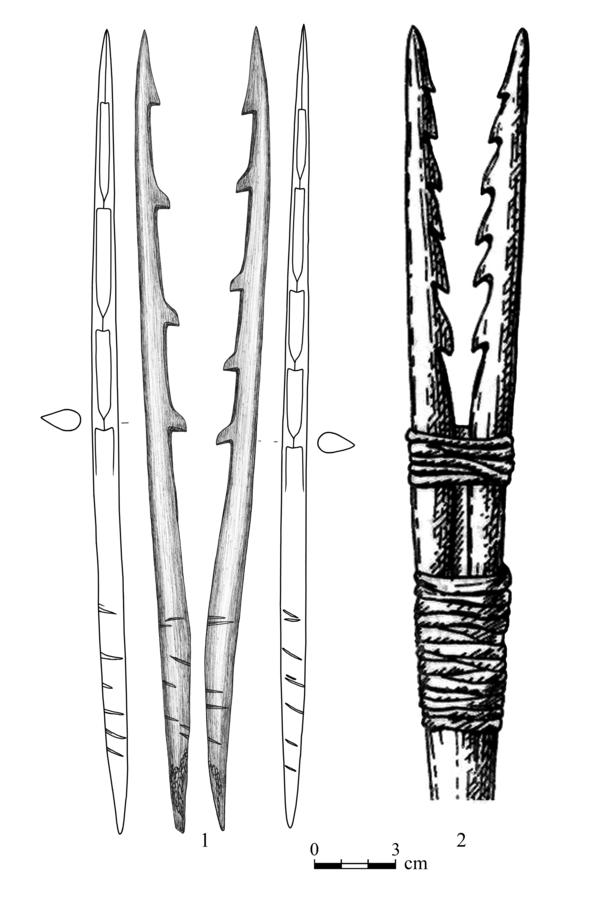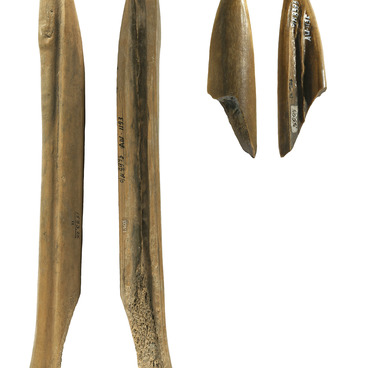Serrated tips were made in the territory which is now Sverdlovsk Region. Spears, darts and harpoons with serrated tips were used for hunting and fishing in the Stone Age. It followed the long glacial period that was over twelve thousand years ago.
Serrated tips for fishing poles (ostroga)
Время создания
Stone Age
Размер
25.2х1.5х0.8 см; 25.4х1.6х0.8 cm
Техника
Scraping, planning, sawing, grinding, polishing
1
Открыть в приложении#5
Unknown Author
Serrated tips for fishing poles (ostroga)
#2
#9
Using
#6
These paired serrated (toothed) points served as fishing pole tips. In the warm season they helped to harvest large fish - perch or pike. The bones of these fish are often found in the Urals at the sites of the Stone Age people.
#7
Manufacture
#8
The tips were made of a long tubular bone of a large animal - an elk, a bear or a deer. To make the bone softer, ancient people put it in a primitive alkaline mixture which consisted of water and ash. After the bone was kept in the solution for several months it became plastic and compliant to instruments, and then it hardened again. With the help of stone wedges, the bone was then split lengthwise into micro plates used for making tip blanks.
#10
Construction
#4
These are large tips with teeth on the pero - the upper impact-delivering part of the tip that penetrates the animal’s body. The bearing part that was attached to the shaft is called nasad. The nasads were designed in a way enabling to firmly fix them to solid wooden shafts.
On the left - bone paired tips of a fishing pole. Drawing by Mikhail Zhilin. On the right - the reconstruction of the fishing pole tips fastening.
#11
There are traces of a planing knife on the tip’s surface which was used, along with stone scrapers, to give the plates a desired shape. Planing tools were also used to work on the teeth. The lower half of the pero was polished with the traces of polishing visible on the tip’s end. The product was finally polished with soft leather. The finished tips were inserted in pairs into the wooden shaft of the fishing pole with the teeth facing inside. The teeth were additionally wrapped with birch bark or willow wool to prevent them from getting off the shaft.
#13
Propagation
#12
Serrated bone tips were common in the forest zone of Eurasia since the eighth millennium BC. The Shigir collection features about a thousand arrow bone tips of various shapes and sizes. Artifacts found in the Shigir peat bog at the end of the XIX century became the first exhibits of the collection. In ancient times, there was a whole system of bogs and lakes in the location of this peat bog. Ancient people settled along the banks of the reservoirs and left behind many artifacts.
#14
the Sverdlovsk Regional Ethnographic Museum (SOKM)
читать дальшескрыть
00:00
00:00
1x
Serrated tips for fishing poles (ostroga)
Время создания
Stone Age
Размер
25.2х1.5х0.8 см; 25.4х1.6х0.8 cm
Техника
Scraping, planning, sawing, grinding, polishing
1
Открыть в приложении
Поделиться




